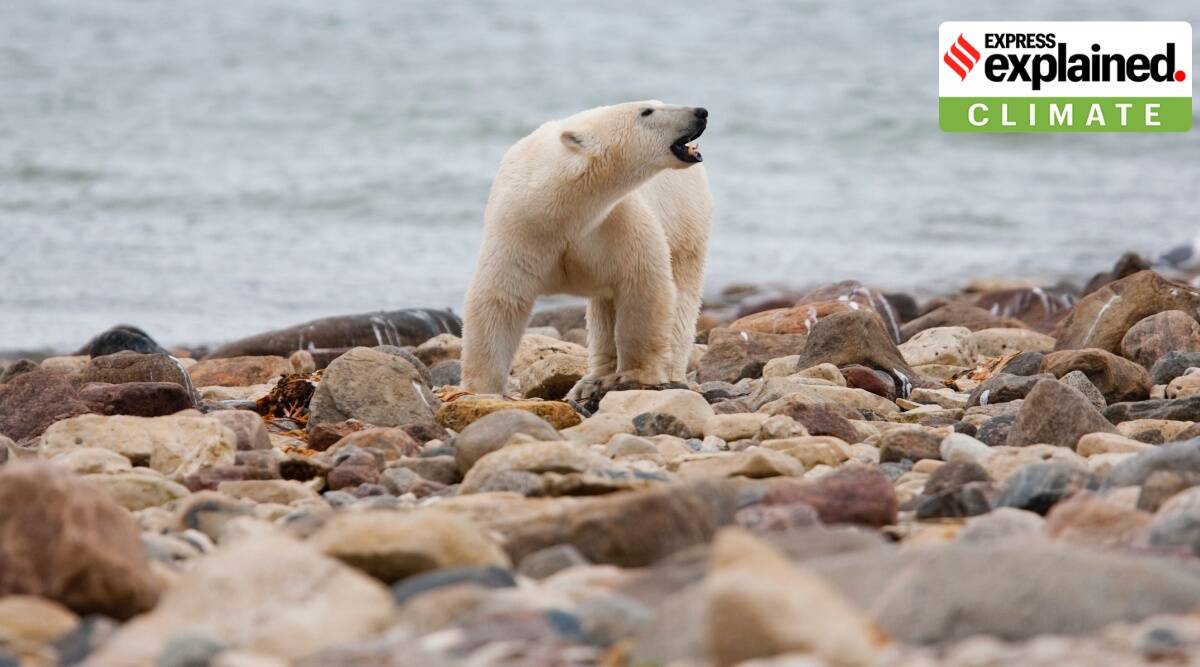Description

Copyright infringement is not intended
Context: Polar bears in Canada’s Western Hudson Bay, an inland sea connected to the Arctic Ocean, are dying at a fast rate, according to a new government survey. It also revealed that females and younger polar bears are the worst affected.
Details:
- At the time of the survey, conducted by air in 2021, researchers calculated that there were 618 bears left in Western Hudson Bay — the region includes Churchill, the town that is known as ‘the Polar Bear Capital of the World’.
- When the last survey took place in 2016, there were 842 bears in the area.
- A study published in Nature Climate Change in 2020 said that polar bears will be wiped out by the end of the century.
Impact of climate change on polar bears
- The Arctic sea ice is crucial to polar bears’ survival as they use it not only to hunt seals — their chief food — but also for travelling, mating and resting.
- However, with rising global temperatures, the sea ice is breaking earlier in summer and refreezing later in winter, due to which polar bears get less time to hunt and have to stay hungry for longer and travel greater distances.
- This extra need for energy coupled with a lack of food can result in body deterioration and a drop in the average weight of adult bears
- Another study that came out in 2020 showed that when temperatures soar and there is a lack of ice, female polar bears give birth to smaller litters of bears.
- It might also lead to the collapse of dens that they build to birth and protect their young.
.jpg)
Importance of polar bears
- Polar bears are one of the most significant predators in the Arctic region and they keep biological populations in balance.
- The big kills made by them serve as a food resource for scavengers like Arctic foxes and Arctic birds.
- If polar bears aren’t able to hunt animals like seals, it can severely impact the food chain and health of the ecosystem.
- Researchers have also found that once polar bears can’t find seals to eat, they would quickly move to kill and survive on other creatures in the Arctic region.
- This would threaten the existence of species like the Arctic fox or the walrus.
- Moreover, it might also cause the overpopulation of seals, which could endanger the existence of crustaceans and fish that are an important food source for local human populations as well as other Arctic wildlife.
About:
- Polar bear’s zoological name is Ursus maritimus, which means “sea bear”.
- Polar bears are restricted to icy Arctic region where temperature falls as low as -50°C.
- They are well adapted to the freezing temperatures, which restricts them to the circumpolar region where 19 populations exist. Over forty percent of polar bears live in the north of Canada.
- Polar bears have the distinction of being the largest land carnivores.
- Adults are about 8 ft long and weigh 300-700 kg, larger than the fearsome grizzly bear.
- Fifty percent of body weight is due to fat and blubber that makes 10 cm thick layer under their blackish skin.
- Polar bear’s whitish fur is extremely dense, oil coated and water repellent, so much so that water does not reach the skin even when they are swimming in sea.
- Each hair is transparent with a hollow core that refracts and reflects visible light to make the fur appear snow white.
- Polar bears are strong swimmers and divers which enables them to swim from one iceberg to another and to hunt seals in sea. They can also swim underneath ice sheet in search of food.
- Polar bears do not hibernate in true sense in dens like the brown and black bears do. Instead they remain active throughout winter in spite of freezing cold.

https://indianexpress.com/article/explained/explained-climate/polar-bears-in-key-canada-region-dying-causes-effects-8342642/












